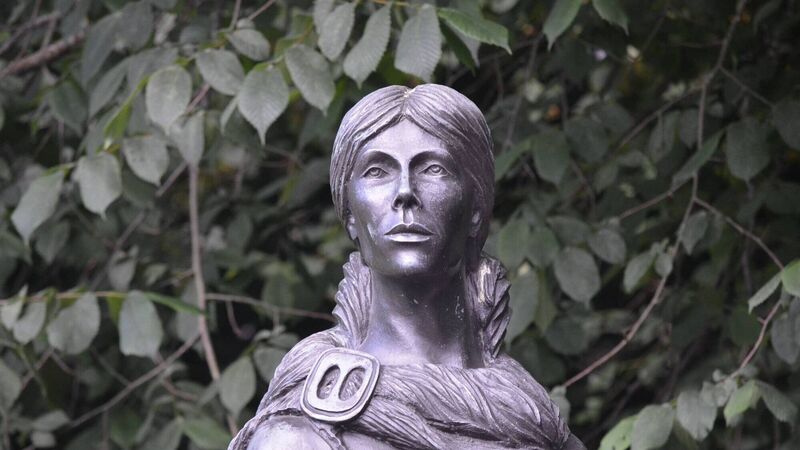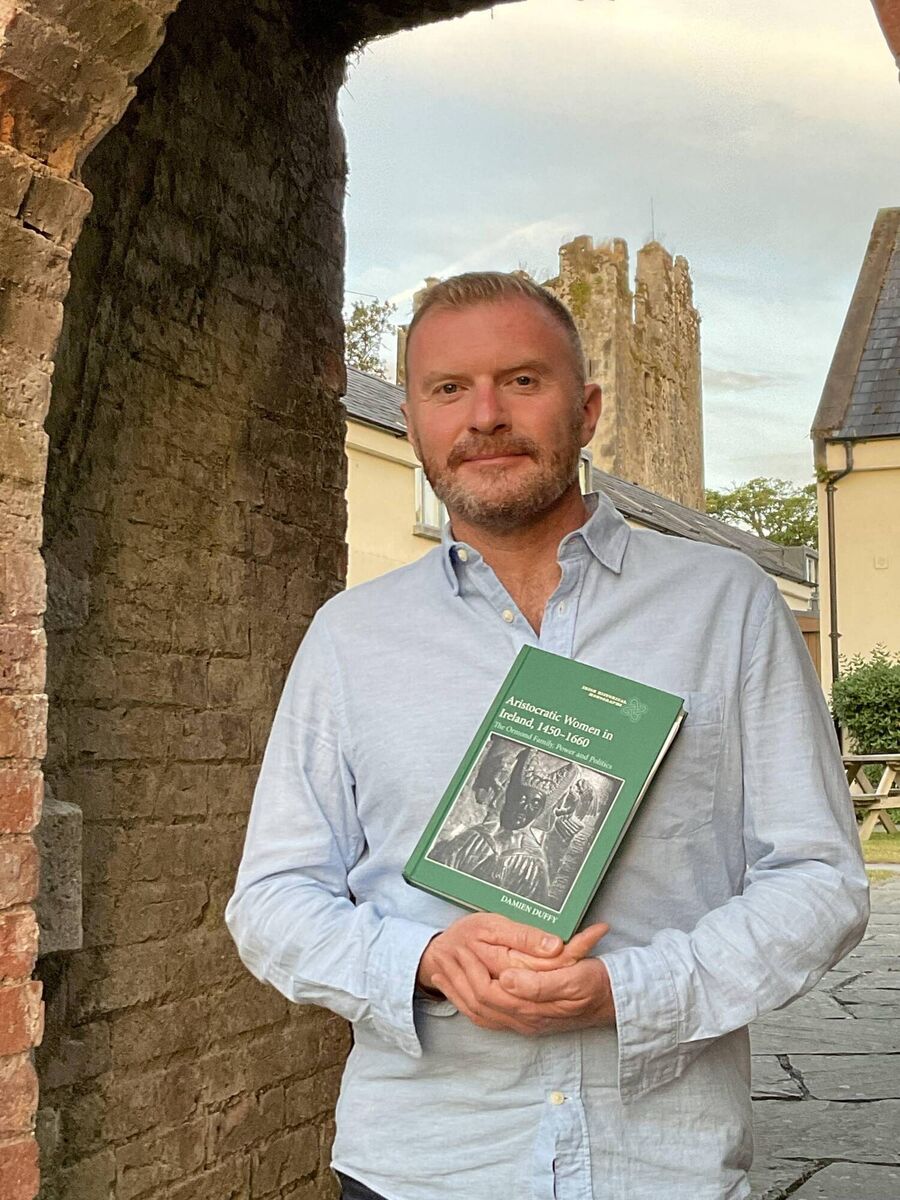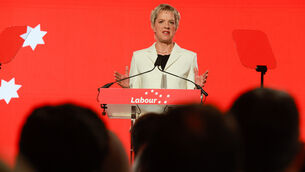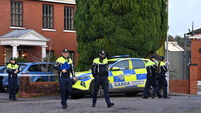Clodagh Finn: Formidable medieval women deserve much more recognition

Grace O'Malley: Not the only powerful woman in late medieval Ireland.
Oh to have been a fly on the wall when Countess Joan Fitzgerald, Irish noblewoman and heiress, hurled several artichokes at her host, Brian Jones, constable of Carlow, in a fit of pique during a visit in 1549. She was deeply frustrated at losing her independence following her second marriage, and she was making it known.
“While I was widow and had not married an Englishman, I defended and kept my own,” the Countess of Ormond complained, as she picked up an artichoke that was to hand and flung it at Jones.
Then, she threw another. “Or at the least, no man went about to defeat me of my right,” she added, before throwing yet another. “Well is the woman unmarried; I am bade to hold my peace, and that my husband shall have answer made unto him,” she continued.
Jones later wrote that the Lady of Ormond threw “all the artichokes” at him, and with great intent, but she missed her target. “Marry, madam,” he said, “you have little skill in fighting.” In any case, he added, you have “too piteous a face to be a bloody warrior”. The countess retorted that she had “a thousand and more” who could fight on the battlefield if, God forbid, it “should come to that point”.
She then retreated, mounted her horse, and said she had disclosed her heart to a friend before riding off.
The account reads like a scene from a particularly engaging screenplay, but it is one of many fascinating insights in (The Boydell Press), a new book from Dr Damien Duffy recounting the under-told stories of successive countesses of Ormond and their daughters.
The book is illuminating, revelatory, and, I have to add, thrilling. It not only fills a yawning gap in Irish history by exploring the lives and roles of these Ormond women, but it portrays them as three-dimensional people who actively shaped the wider political, societal, economic, and cultural changes of the day.
As Duffy explains: “Far from being hapless pawns, the Ormond heiresses proved themselves to be shrewd agents in complex factional disputes that involved, among others, the monarchs of their time.”
Ask him why he wrote it, and he wryly observes that “the libraries are falling down with books on men”.
What is particularly absorbing about Duffy’s book is that it does more than give voice to the women of late medieval and early modern Ireland. This volume gives you a real sense of the personalities of 21 women who, from the 15th to mid-17th century, operated skilfully in the hybrid world of Hiberno-Norman and Gaelic lordships.
One of many delightful nuggets is an illustration of Joan Fitzgerald’s wicked sense of humour when she engaged in a bit of 16th-century leg-pulling during an evening in London in the 1540s.
She regaled all the elite present with stories of how she had borne ten children — seven sons survived — in a tent or a wide barn, as was the custom in Ireland. Her listeners were appalled, saying that the Irish were beasts, as she was, although it is certain that every one of her births was carefully managed in accordance with her status as an aristocratic woman.
The glimpses into her personality are fascinating, but so too is the account of how her three marriages and two widowhoods put her in a position of rare power in the Gaelic and Old English worlds of the time. She reacted against her arranged marriage to lord justice of Ireland Sir Francis Bryan in 1548. However, when he died she was free to choose a third marriage partner — her cousin Gerald Fitzgerald, who was many years her junior.
He was just 16 when she moved from Kilkenny to Askeaton Castle in Limerick and assumed the role of peacekeeper. She rode out onto the battlefield to keep the peace between the houses of Desmond and Ormond, earning the title “the angel of peace” from Queen Elizabeth l.
On one occasion, in 1560, thousands of footsoldiers and 750 horses were assembled on both sides of the battlefield at Bohermore, Co Tipperary, and she rode between both camps —one led by her third husband, the Earl of Desmond, and the other by a son from her first marriage, the Earl of Ormond — to broker a peace.
An uneasy truce held for a number of years but unravelled just a month after her death, aged 50, in 1565 when her husband Gerald and son Thomas met in open warfare at Affane in Waterford.
It was interesting to see that National Geographic carried an enthusiastic tribute to Mayo’s famous pirate queen Granuaile (Grace O’Malley) last month, observing that Ireland is planning to celebrate this early “example of female self-empowerment” with a new tourist route.
While it is heartening to see her so widely commemorated, Grace O’Malley was not the only powerful woman in late medieval Ireland. Far from it. As Duffy’s book shows, there were so many others, though sadly those women’s names are not as well-known as they should be.

Margaret Fitzgerald, Countess of Ormond and Ossory — and mother-in-law of the aforementioned Joan — might be better-known than most. Her likeness stands in the National Museum of Ireland, dressed in a copy of the elaborate horned headdress that adorns her effigy in St Canice’s Cathedral in Kilkenny. The panels note that she was “manlike, tall of stature, very rich and bountiful, a bitter enemy”, and also that she was one of the most influential and important women of her time (she died in 1542).
As Duffy emphasises, she was not alone. Rose O’Toole, wife of Feagh McHugh, was also described in masculine terms. She was a fierce opponent and “a woman of manly courage above that of a woman”.
If medieval women were brave, they were also very able political operators. Margaret Fitzgerald, said one chronicler, was “a lady so politic, that nothing was thought substantially debated without her advice”. The wife of Turlough O’Neill of Ulster, Lady Agnes Campbell, was commended for her diplomacy and skills, while Margaret O’Brien Burke, Countess of Clanricarde, who died in 1568, was remembered as “the best woman in Eirinn in her own time”.
“If we live 100 years, we still won’t get to tell all the stories of women in Ireland,” Duffy says, although he has made an important — and fascinating — start by casting a light on six generations of women who have not garnered anywhere near the attention they deserve.
“These stories need to be told,” he adds. “We have a responsibility to talk about those who have come before us.” And, as he shows in his book, what an enriching conversation that can be.











